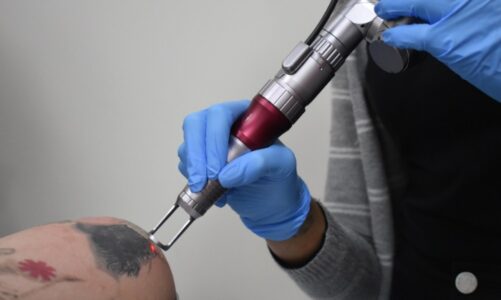Key Takeaways:
- An ultrasound technologist uses ultrasound technology to capture images of the body for diagnosing and treating medical conditions.
- Ultrasound technology works by emitting sound waves into the body and recording the echoes that bounce back.
- To become an ultrasound technologist, individuals need technical skills, medical knowledge, and interpersonal abilities.
- Job responsibilities of an ultrasound technologist include preparing patients, operating and analyzing ultrasound equipment, collaborating with physicians, and maintaining records.
- Specializations in ultrasound technology include obstetrics and gynecology, musculoskeletal ultrasound, and cardiovascular ultrasound.
- Education and training options for aspiring ultrasound technologists include accredited programs, clinical rotations, and certification and licensure requirements.
- The field of ultrasound technology has promising career prospects with a projected growth rate higher than the average for all occupations.
- Continuing education and professional development are important for staying current in the field.
- Advancement opportunities for ultrasound technologists include specializing in a specific area, pursuing management positions, or engaging in research.
1. The Role of an Ultrasound Technologist: Exploring the Exciting Field
An ultrasound technologist, also known as a diagnostic medical sonographer, plays a crucial role in the field of healthcare. These professionals specialize in using ultrasound technology to capture images of various parts of the body, assisting physicians in diagnosing and treating medical conditions. Ultrasound technology uses sound waves to create images of organs, tissues, and blood flow, allowing doctors to get a closer look at the inner workings of the body without invasive procedures.
1.1 The Science Behind Ultrasound Technology: How It Works
Ultrasound technology works by emitting high-frequency sound waves into the body and recording the echoes that bounce back. These echoes are processed by a computer to create real-time images. The transducer, a handheld device, is placed on the patient’s skin and moved around to capture images from different angles and depths. The images produced provide valuable information about the structure and function of organs, helping medical professionals make accurate diagnoses and develop appropriate treatment plans.
1.2 Skills and Qualifications Needed to Become an Ultrasound Technologist
Becoming an ultrasound technologist requires a combination of technical skills, medical knowledge, and interpersonal abilities. To begin a career in this field, individuals must complete a formal education program accredited by the Commission on Accreditation of Allied Health Education Programs (CAAHEP) or the Joint Review Committee on Education in Diagnostic Medical Sonography (JRC-DMS).
Key skills for ultrasound technologists include:
- Strong understanding of human anatomy and physiology
- Proficiency in operating ultrasound equipment and analyzing images
- Excellent communication and patient care skills
- Attention to detail and ability to follow instructions
- Problem-solving and critical thinking abilities
- Ability to work well in a team and adapt to new technologies
1.3 Job Responsibilities of an Ultrasound Technologist: What to Expect
Ultrasound technologist jobs have a wide range of responsibilities that may vary depending on their specialization and the healthcare setting they work in. Some common tasks include:
- Preparing patients for the ultrasound procedure and explaining the process
- Positioning patients to obtain the best possible images
- Operating and adjusting ultrasound equipment to capture images
- Analyzing images for quality and diagnostic value
- Collaborating with physicians to determine the best course of action based on the ultrasound findings
- Keeping detailed records of patient information and imaging results
- Maintaining and calibrating equipment to ensure accuracy
- Providing emotional support to patients during the procedure
2. Different Specializations in Ultrasound Technology: Finding Your Niche
Ultrasound technology offers a diverse range of specializations, allowing professionals to focus on specific areas of expertise. By choosing a specialization, ultrasound technologists can become highly skilled in a particular field and contribute to the diagnosis and treatment of specific medical conditions. Here are three popular specializations in ultrasound technology:
2.1 Obstetrics and Gynecology: Exciting Prospects in Women’s Health
Ultrasound technologists specializing in obstetrics and gynecology focus on imaging the female reproductive system and monitoring the health and development of fetuses during pregnancy. They perform ultrasounds to assess the progress of pregnancies, detect abnormalities, and monitor the well-being of both the mother and the baby. Obstetric and gynecologic ultrasound technologists often work closely with obstetricians, gynecologists, and other healthcare professionals to provide essential diagnostic information.
2.2 Musculoskeletal Ultrasound: Unlocking the Potential of Precise Imaging
Musculoskeletal ultrasound technologists specialize in imaging the muscles, tendons, ligaments, joints, and other structures related to the musculoskeletal system. This specialization is particularly valuable in orthopedics and sports medicine, as it allows for accurate and real-time assessment of injuries, conditions, and diseases affecting the musculoskeletal system. Musculoskeletal ultrasound can assist in guiding injections, detecting inflammation, and assessing soft tissue abnormalities.
2.3 Cardiovascular Ultrasound: Saving Lives, One Scan at a Time
Cardiovascular ultrasound technologists focus on imaging the heart and blood vessels to assist in the diagnosis and treatment of cardiovascular diseases. Using specialized equipment, they capture images of the heart’s structure, blood flow patterns, and function. These images help cardiologists and cardiovascular surgeons evaluate heart conditions, detect abnormalities, and plan appropriate interventions. Cardiovascular ultrasound technologists play a vital role in identifying heart disease, assessing the effectiveness of treatments, and monitoring patients’ cardiac health.
3. Exploring the Education and Training Options for Aspiring Ultrasound Technologists
Being a successful ultrasound technologist requires a solid educational foundation and hands-on training. Several education and training options are available to aspiring ultrasound technologists, including accredited programs, clinical rotations, and certification and licensure requirements.
3.1 Accredited Programs: Choosing the Right Ultrasound School
Accredited ultrasound programs provide the necessary education and training to become a competent ultrasound technologist. When choosing a program, it is important to ensure it is accredited by the CAAHEP or JRC-DMS. These accreditations guarantee that the program meets specific standards of quality and prepares students for a career in ultrasound technology. Accredited programs typically offer a combination of classroom instruction, laboratory practice, and clinical experience.
3.2 Clinical Rotations: Gaining Hands-on Experience in Real Healthcare Settings
Clinical rotations are an essential component of ultrasound technology education. During clinical rotations, students have the opportunity to apply their classroom knowledge in real healthcare settings under the supervision of experienced professionals. This hands-on experience allows students to develop their skills, gain confidence, and establish professional connections. Clinical rotations also provide an invaluable opportunity to observe and learn from professionals working in various specialties of ultrasound technology.
3.3 Certification and Licensure: Becoming a Registered Ultrasound Technologist
After completing an accredited program, ultrasound technologists can pursue certification and state licensure, although requirements may vary by state. Certification is typically obtained through a professional organization, such as the American Registry for Diagnostic Medical Sonography (ARDMS) or the American Registry of Radiologic Technologists (ARRT). These certifications demonstrate competency in the field and may enhance job prospects and earning potential. Additionally, some states require ultrasound technologists to obtain a license to practice.
4. Career Outlook and Advancement Opportunities in Ultrasound Technology
The field of ultrasound technology offers promising career prospects, with a projected growth rate higher than the average for all occupations. As medical imaging technology continues to advance and the demand for non-invasive diagnostic procedures increases, the need for skilled ultrasound technologists is expected to rise.
4.1 Job Prospects and Demand for Ultrasound Technologists: Trends and Predictions
According to the Bureau of Labor Statistics, employment of diagnostic medical sonographers (including ultrasound technologists) is projected to grow 12 percent from 2020 to 2030, much faster than the average for all occupations. This growth is primarily driven by the aging population, who require medical imaging to diagnose and treat various medical conditions. Ultrasound technology is considered safe, non-invasive, and cost-effective, making it a preferred imaging modality for many healthcare providers.
4.2 Continuing Education and Professional Development in the Field
Continuing education and professional development are essential for ultrasound technologists to stay current with the latest advancements and maintain their professional certifications. Many professional organizations offer opportunities for technologists to expand their knowledge and skills through conferences, workshops, and online courses. Additionally, pursuing advanced certifications or specialized training in areas such as pediatric ultrasound or vascular ultrasound can open up new opportunities for career advancement.
4.3 Advancing Your Career: Specializations, Management Positions, and Research
As ultrasound technologists gain experience and expertise, they can pursue various paths to advance their careers. Specializing in a specific area, such as fetal echocardiography or breast ultrasound, can lead to more specialized roles and higher earning potential. Additionally, some technologists may choose to transition into management positions, where they oversee a team of ultrasound technologists or manage a department. Others may explore opportunities in research and development, contributing to the advancement of ultrasound technology and its applications in healthcare.
FAQ
Question: What are the skills and qualifications needed to become an ultrasound technologist? – To become an ultrasound technologist, individuals need a strong understanding of human anatomy and physiology, proficiency in operating ultrasound equipment and analyzing images, excellent communication and patient care skills, attention to detail and the ability to follow instructions, problem-solving and critical thinking abilities, and the ability to work well in a team and adapt to new technologies.
Question: What are the job responsibilities of an ultrasound technologist? – The job responsibilities of an ultrasound technologist include preparing patients for the ultrasound procedure and explaining the process, positioning patients to obtain the best possible images, operating and adjusting ultrasound equipment to capture images, analyzing images for quality and diagnostic value, collaborating with physicians to determine the best course of action based on the ultrasound findings, keeping detailed records of patient information and imaging results, maintaining and calibrating equipment to ensure accuracy, and providing emotional support to patients during the procedure.
Question: What are the different specializations in ultrasound technology? – There are different specializations in ultrasound technology, including obstetrics and gynecology, musculoskeletal ultrasound, and cardiovascular ultrasound.
Question: What is the specialization of obstetrics and gynecology in ultrasound technology? – Ultrasound technologists specializing in obstetrics and gynecology focus on imaging the female reproductive system and monitoring the health and development of fetuses during pregnancy. They perform ultrasounds to assess the progress of pregnancies, detect abnormalities, and monitor the well-being of both the mother and the baby.
Question: What is the specialization of musculoskeletal ultrasound in ultrasound technology? – Musculoskeletal ultrasound technologists specialize in imaging the muscles, tendons, ligaments, joints, and other structures related to the musculoskeletal system. This specialization is particularly valuable in orthopedics and sports medicine, as it allows for accurate and real-time assessment of injuries, conditions, and diseases affecting the musculoskeletal system.
Question: What is the specialization of cardiovascular ultrasound in ultrasound technology? – Cardiovascular ultrasound technologists focus on imaging the heart and blood vessels to assist in the diagnosis and treatment of cardiovascular diseases. Using specialized equipment, they capture images of the heart’s structure, blood flow patterns, and function. These images help cardiologists and cardiovascular surgeons evaluate heart conditions, detect abnormalities, and plan appropriate interventions.
Question: What are the education and training options for aspiring ultrasound technologists? – Aspiring ultrasound technologists can pursue education and training through accredited programs, clinical rotations, and certification and licensure requirements.
Question: What are the career outlook and advancement opportunities in ultrasound technology? – The field of ultrasound technology offers promising career prospects, with a projected growth rate higher than the average for all occupations. Ultrasound technologists can advance their careers by specializing in a specific area, pursuing management positions, or engaging in research. Continuing education and professional development are important for staying current in the field.
Useful Resources:
- Commission on Accreditation of Allied Health Education Programs (CAAHEP)
- Joint Review Committee on Education in Diagnostic Medical Sonography (JRC-DMS)
- American Registry for Diagnostic Medical Sonography (ARDMS)
- American Registry of Radiologic Technologists (ARRT)
- Bureau of Labor Statistics (BLS)
- Accredited Schools Online – Ultrasound Technician Programs
- National Center for Biotechnology Information (NCBI)
- Society of Diagnostic Medical Sonography (SDMS)




